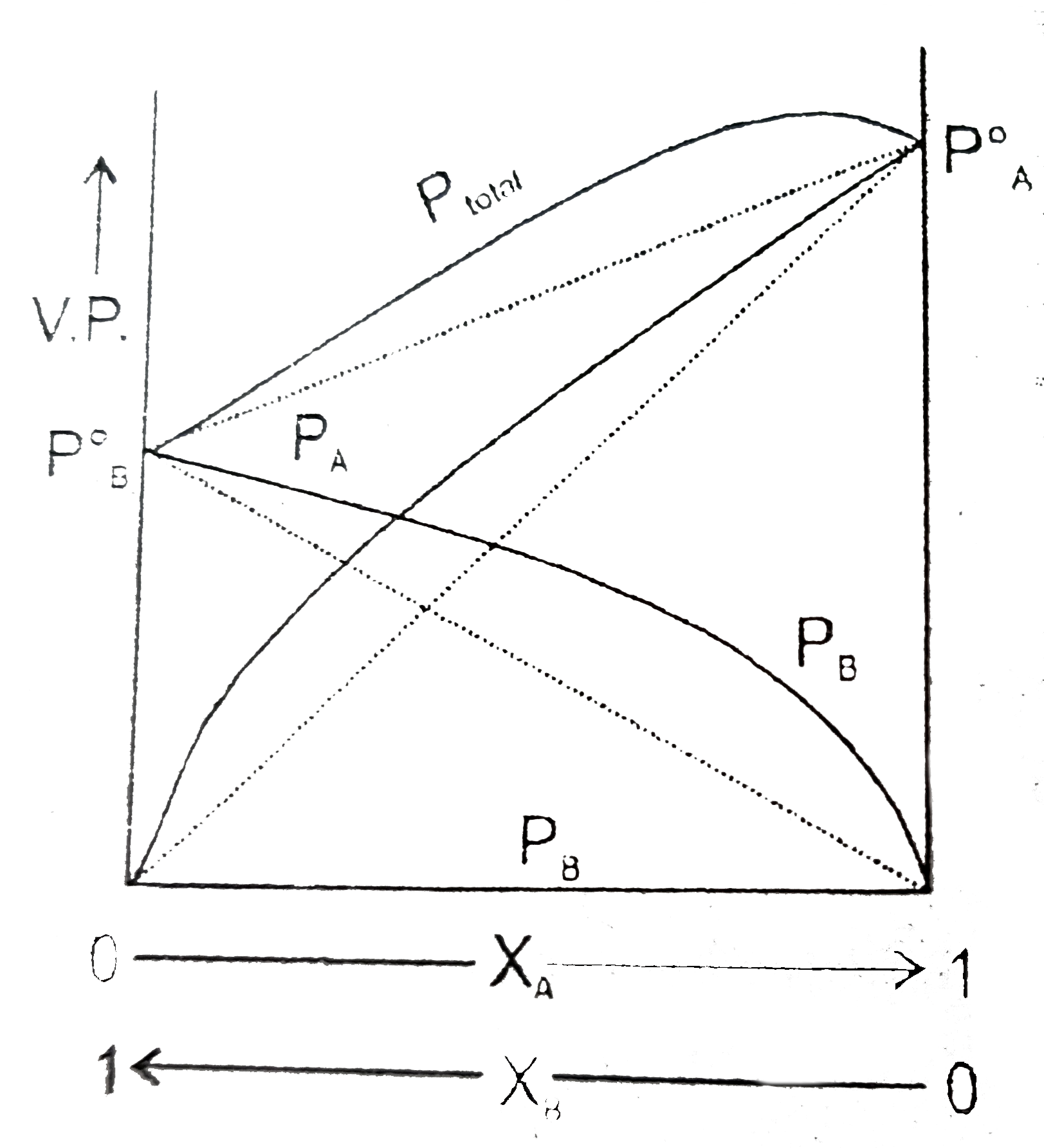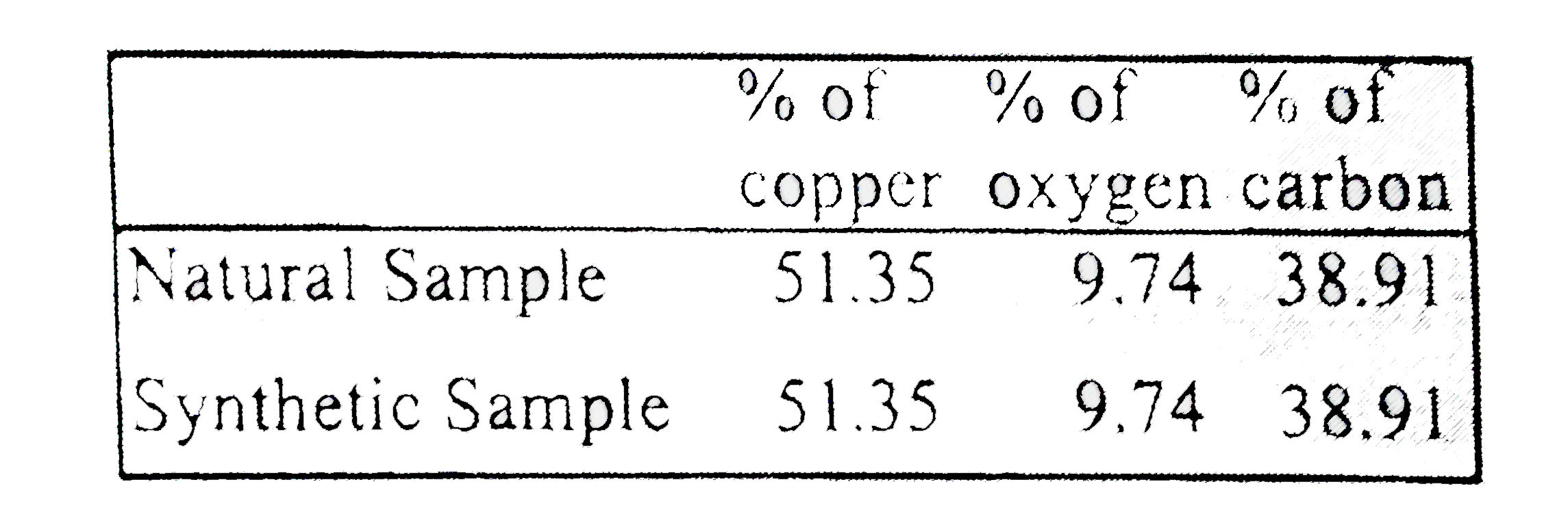Give reasons for the following :
(a) When 2g of benzoic acid is dissolved in 25 g of benzene, the experimentally determined molar mass is always greater than the true value.
(b) Mixture of ethanol and acetone shows positive deviation from Raoult's Law.
(c) The preservation of fruits by adding concentrated sugar solution protects against bacterial action.
(a) Molecules of benzoic acid dimerise in benzen. the number of particles are reduced.
(b) The intermolecular interactions between ethanol and acetone are weaker/the escaping tendency of ethanol and acetone molecules increases on mixing/the vapour pressure increases.
(c) Due to osmosis, a bacterium on fruit loses water, shrivels and dies
Topper's Solved these Questions
- BOOK - XII BOARD PREVIOUS YEAR PAPER ENGLISHCHAPTER - XII BOARDSEXERCISE - SET- I34videos
XII BOARDS
- BOOK - XII BOARD PREVIOUS YEAR PAPER ENGLISHCHAPTER - XII BOARDSEXERCISE - SET- II10videos
XII BOARDS
- BOOK - XII BOARD PREVIOUS YEAR PAPER ENGLISHCHAPTER - XII BOARDSEXERCISE - QUESTION PAPER (SECTION-B)10videos
XII BOARDS
- BOOK - XII BOARD PREVIOUS YEAR PAPER ENGLISHCHAPTER - SAMPLE PAPER 2019EXERCISE - SECTION: D1videos
SAMPLE PAPER 2019
Similar Questions
The experimentally determined molar mass for what type ofsubstances is always lower than the true value when water is used as solvent. Explain. Give one example of such a substance and one example of a substance which does not show a large variation from the true value.
View SolutionAnswer the question (given below) which are based on the following diagra.

Consider some facts about the above phase diagram :
Vapour pressure diagram for real solutions of two liquids A and B that exhibit a positive deviation from Raoult's law. The vapour pressure of both A and B are greater than predicted by Raoult's law. The dashed lines lines represented the plots for ideal solutions.
A: This is observed when A...B attraction are greater than average of A...B and B...B attraction:
B: ΔHmix=+ve,ΔVmix=+ve
C: Boiling point is smaller than expected such that vaporisation is increased
D: Mixture is called azeotropic mixture
Select correct factsView SolutionAcetone and carbon disulphide form binary liquid solution showing positive deviation from Raoult's law. The normal boiling point (Tb) of pure acetone is less than that of pure CS2. Pick out the incorrect statement among the following :
View SolutionNirtobenzene is formed as the major product along with a minor product in the reaction of benzene with a hot mixture of nitric acid and sulphuric acid. The minor product consists of carbon 42.86%, hydrogen 2.40%, nitrogen 16.67% and oxygen 38.07%.
a. Calculate the empirical formula of the minor product.
b. When 5.5g of the minor product is dissolved in 45g of benzene, the boiling point of the solution is 1.84C higher than that of pure benzen. Calculate the molar mass of the minor product and determine its molecular and structural formulae. (Molar elevation constant of benzene is 2.53Kkgmol−1)View Solution2.44 g 'w' g of the benzoic acid dissolved in 30 g of benzene shows depression in freezing equal to 2K. If the percentage association of the acid to form polymer (C6H5COOH)n in the solution is 80, then find numerical value of n. (Given that Kf=5Kkgmol−1, Molar mass of benzoic acid =122gmol−1)
View Solution(a) What type of deviation is shown by a mixture of ethanol and acetone? Give reason
(b) A solution of glucose (molar mass =180 gmol−1) in water is labelled as 10% (by mass) what would be the molality and molarity of the solution ?
(Density of solution =1.2 gL−1)View SolutionThe reaction 2AX(g)+2B2(g)→A2(g)+2B2X(g) has been studied kinetically and on the baiss of the rate law following mechanism has been proposed.
I. 2AX⇔A2X2 (fast and reverse)
II. A2X2+B2→A2X+B2X
III. A2X+B2→A2+B2X
where all the reaction intermediates are gases under ordinary condition.
form the above mechanism in which the steps (elementary) differ conisderably in their rates, the rate law is derived uisng the principle that the slowest step is the rate-determining step (RDS) and the rate of any step varies as the Product of the molar concentrations of each reacting speacting species raised to the power equal to their respective stoichiometric coefficients (law of mass action). If a reacting species is solid or pure liquid, its active mass, i.e., molar concentration is taken to be unity, the standard state. In qrder to find out the final rate law of the reaction, the concentration of any intermediate appearing in the rate law of the RDS is substituted in terms of the concentration of the reactant(s) by means of the law of mass action applied on equilibrium step.
Let the equilibrium constant of Step I be 2×10−3mol−1L and the rate constants for the formation of A2X and A2 in Step II and III are 3.0×10−2mol−1L−1min and 1×103mol−1L−1min (all data at 25∘C), then what is the overall rate constant (mol−2L2−1min) of the consumption of B2?View SolutionThe main application of osmotic pressure measurement is in the determination of the molar mass of a substance which is either slightly soluble or has a very high molar mass such as proteins, polymers of various types and colloids.This is due to the fact that even a very small concentraion of the solution produces fairly large magnitude of osomotic pressure.In the laboratory the concentrations usually employed are of the order of 10−3 to 10−4 M.At concentration of 10−3 mol dm−3 , the magnitude of osmotic pressure of 300 K is :
P=10−3×0.082×300=0.0246 atm
or 0.0246×1.01325×105=2492.595Pa
At this concentration, the values of other colligative properties such as boiling point elevation and depression in freezing point are too small to be determined experimentally.
Further polymers have following two types of molar masses :
(A) Number average molar mass (¯¯¯¯Mn), which is given by ∑iNiMi∑iNi
where Ni is the number of molecules having molar mass Mi.
(B) Molar average molar mass (¯¯¯¯Mm), which is given by ∑iNiM2i∑iNiMi
Obviously the former is independent of the individual characteristics of the molecules and gives equal weightage to large and small molecules in the polymer sample.On the other hand later gives more weightage to the heavier molecules.Infact with the help of a colligative property only one type of molar mass of the polymer can be determined.
One gram each of polymer A (molar mass=2000) and B(molar mass=6000) is dissolved in water to form one litre solution at 27∘C.The osmotic pressure of this solution will be :View SolutionMolecules of benzoic acid (C6H5COOH) dimerise in benzene. ‘w’ g of the acid dissolved in 30g of benzene shows a depression in freezing point equal to 2K. If the percentage association of the acid to form dimer in the solution is 80, then w is : (Given that Kf=5KKgmol−1 Molar mass of benzoic acid =122gmol−1)
View SolutionThis law was given by, a French chemist , Joseph Proust. He stated that a given compound always contains exactly the same proportion of elements by weight.
Proust worked with two samples of curpic carbonate- one of which was of natural origin and the other was synthetic one . He found that the composition of elements present in it was for both the samples as shown below:
Thus, irrespective of the source, a given compound always contains same elements in the same proportion. The validity of this law has been confrmed by various experiments. It is sometimes also reffered to as Law of constant composition.
Limitation:
This law is not applicable if the compound is formed from different isotopes of an element . The two isotopes of carbon C-12 and C-14 form carbondioxide C12O2 and C14O2 . The ratio of C : O is 12 : 32 and 14 : 32 respectively .It is not a constant ratio.
0.5 G silver is dissolved in excess of nitric acid. This solution is treated with excess of NaCl solution when 0.66 g AgCl is formed. One gram metallic silver wire is heated in dry Cl2 ,1.32 g AgCl is formed . Show that these data confirm the law of constant proportion.
 View Solution
View Solution

